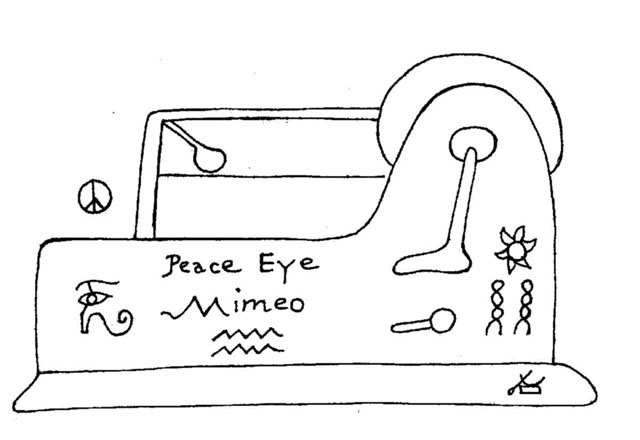We'll kick off the second half of the semester with a hodgepodge of readings focused on the aesthetic potentials of various media and their historic connection to poetry in various guises. You'll see a lot of familiar names return in these various readings, as well as some poets and artists who'll be coming up in the second half of the semester. Some of these readings will largely be aimed towards providing background information and historical contexts, but there'll be a lot for us to discuss as well.
First, we'll consider the role of public readings in shaping mid-century poetic movements. Daniel Kane's excellent book, All Poets Welcome: the Lower East Side Poetry Scene in the 1960s will provide us with a short history of the reading series at Les Deux Mégots and Le Metro, which were important precursors to the St. Mark's Poetry Project. You can stop reading when you get to "Harassment of the Arts at Le Metro" on pg. 48, though that's an interesting story as well: [PDF]
 |
| Ed Sanders' drawing of the Peace Eye mimeograph, which was used to publish Fuck You, A Magazine of the Arts |
Moving back into the audio realm, I'm including a brief piece by Charles Bernstein, "Hearing Voices," which lays out some of the key ideas to his notion of "close listening," in a more concise and up-to-date way than his classic introduction to the volume of the same name where those concepts were first codified a generation ago: [PDF].
You'll also want to take a look at the Museum of Modern Art's retrospective on John Giorno's "Dial-A-Poem" project — put together as part of the Ecstatic Alphabets / Heaps of Language exhibition several years back — which allows you to interact with the GPS archives as one might have in the late 60s and early 70s when the phone-based poetry service was in existence.
While we're speaking of media manipulations of the human voice towards aesthetic ends, we should also consider a few classic experimental compositions of the late 1960s. All three pieces feature a (relatively) simple text that's then altered through processes of replication that takes advantages of the imprecise characteristics of the recording medium itself to produce radical revisions of the material.
- First, we have two tape-phase pieces by Steve Reich, It's Gonna Rain (1965) and Come Out (1966). You can read more about the pieces at the links above, and listen to each below:
- Next, we have Alvin Lucier's I am sitting in a room (1969), which you can read about at the link above and listen to here. Lucier's piece recently inspired a 21st century visual version, "Sitting in Stagram," which applies the same aesthetic ideas to a different medium.
Finally, because we already have so much to discuss, I offer up these last two things purely as voluntary supplemental reading — something to go back to after the semester is over, perhaps:
- Hua Hsu's Artforum essay, "Thanks for the Memorex," on the history of Sony's Walkman and the larger intellectual property issues raised by its existence: [link (requires registration)][PDF]
- Museum of Obsolete Media: for every physical medium that stands the test of time, there are so many that have failed

No comments:
Post a Comment